The ICRC Library’s collections retrace over 150 years of the history of the International Movement of the Red Cross and Red Crescent. Its rare books collection inherited from the ICRC founders as well as current ones offer a unique testimony to the development of humanitarian action. They also reflect the diversity of the activities of a movement working across the globe to assist victims of armed conflict and other situations of violence since 1863. These collections also include the writings of humanitarian action and law pioneers, whether they took part in the Movement’s development, inspired its action or shared its values and missions. Recently reorganized, a collection of the Library comprises the writings of these nurses, doctors, diplomats, scientists or jurists of the 19th and 20th centuries and the biographies or studies inspired by their action.
Fridtjof Nansen (1861 – 1930), the ICRC and Humanitarian Aid after the First World War
After the end of the First World War, Norwegian explorer and diplomat Fridtjof Nansen played a crucial role in the development of humanitarian aid. He designed and implemented an international response to the most serious humanitarian crises of the 1920s. Mandated by the newly founded League of Nations to assist refugees fleeing the new Russian regime, Nansen became in August 1921 the first High Commissioner for Refugees. During the inter-war years, the identity document named after him – the well-known Nansen passport – gave to near half a million stateless persons a chance to cross borders and find a new homeland. Awarded the Nobel Peace Prize in 1922 for his humanitarian action, he is remembered as a key precursor of international refugee law, having developed and established some of its core postulates, including the principle of non-refoulement.
The resolution of the most pressing humanitarian issues of the period seemed to weigh solely on his shoulders, as he successively – and often simultaneously – assumed the roles of High Commissioner for the Repatriation of Prisoners of War, High Commissioner for Refugees and High Commissioner for Relief in Russia. To carry out his missions in Europe, he could count on the unwavering support of independent humanitarian actors. The delegates of the International Committee of the Red Cross (ICRC), present where the repercussions of the conflict caused massive human suffering, soon became invaluable allies.
Fridtjof Nansen, Scientist, Explorer and Diplomat
Born in Store Frøen, not far from the Norwegian capital, Fridtjof Nansen first became known for his polar expeditions and his related scientific discoveries. After his zoology studies, he took part in the fishing vessel The Viking’s journey up North to observe the Arctic fauna. He was appointed curator of the Natural History Museum of Bergen upon his return and prepared a thesis on the animal nervous system. Soon growing restless in his new position, Nansen conceived the ambitious project to be the first to reach the unexplored regions of Greenland, skiing across the uninhabited, hostile lands. Just a few days after submitting his doctoral dissertation, he embarked with five companions for a yearlong expedition. Stranded in Godthåb because of the terrible weather conditions, Nansen spent the winter of 1888 studying the culture and habits of the local population. His return to Norway the following spring was nothing short of a triumph. He published two books detailing his experience, The First Crossing of Greenland (1890) and Eskimo Life (1891), further raising the public’s interest in his explorations.
From the observation of drift ice, Nansen deduced the presence of a current flowing across the Arctic Ocean from Siberia. In 1893, he conceived a ship, named the Fram (‘forward’ in Norwegian) and let her drift toward the Great North with all the equipment needed for a scientific expedition of an unprecedented nature on board. The Fram would reach the highest latitude of all the polar explorations of the time, though it failed to attain the Pole. The scientific data brought back by its crew members fostered scientific research in the following years and led to countless breakthroughs in the fields of oceanography, geography and meteorology.
Back on the mainland, Fridtjof Nansen resumed his research and taught at the University of Oslo. Now a public persona, he became acquainted with the diplomatic circles of the time and grew interested in international affairs. In 1905 he played a small part in the separation of the Union between Norway and Sweden. He was appointed the following year in Great Britain as the ambassador of the newly independent Norwegian state. Three years later, after the death of his first wife, he resigned and came back to his home country to work as a professor of oceanography. In parallel, he also resumed his exploration of the Great North, leading several successful expeditions.
The American entry into World War I in April 1917 prompted his return on the political scene. Because of the allied blockage of Germany, importations to Norway were coming to a halt and the country faced a serious threat of famine. In Washington, Nansen successfully negotiated a relaxation of the blockage with the American government and food shipments resumed. In 1919, he was part of the Norwegian delegation to the Paris Peace Conference and argued for the recognition of the rights of small states and minorities. Deeply shocked by the horrors of the war, Nansen firmly believed that the peaceful resolution of future conflicts could be achieved through the development of international diplomacy. He became one of the first delegate of the League of Nations, the forerunner of the United Nations, after its creation on January 10th 1920.
A First Humanitarian Mission: The Repatriation of Prisoners of War Stranded in Siberia
Extract from Fridtjof Nansen’s report on the repatriation of prisoners of war, presented to the League of Nations on November 18th 1920
« Most of these prisoners have been captive for four to six years. (…) The sufferings these men have experienced goes beyond all I could tell the Assembly. They have not only been through the usual deprivations and anxieties, but have suffered in every way imaginable, from the cold, starvation, disease, lack of care and overexertion. In many parts of Russia, the condition of the camps has been, for a part of the last four years, absolutely terrible, and the prisoners’ mortality rate has reached almost inconceivable proportions. » [1]
The armistice signed on November 11th 1918 put an end to the global conflict that had been decimating troops and civilian populations for the last four years. Europe was devastated, century old borders and political regimes had collapsed, and the political climate remained highly unstable. The repatriation of former prisoners of war was one of the numerous talking points of the diplomatic negotiations between the former belligerents. The resolution of the issue would soon be complicated by Russia’s isolation on the international scene.
The International Committee of the Red Cross had worked to assist prisoners of war during the conflict. As it came to an end, the humanitarian organization sought to help those whose repatriation had not been arranged via international agreements. In early 1919, the ICRC was particularly worried by the fate of the hundreds of thousands of former prisoners still detained in Siberia. If they were theoretically free, these men remained physically unable to return to their homeland as they were deprived of all material resources and had no means of transport. The two ICRC delegates sent to examine the situation in March 1919, Dr. Montandon and Mr. Jacot-Guillarmot, underlined the urgency of their situation. [2] The ex-prisoners were condemned to freeze or starve to death if they were not quickly repatriated. Immediately, the ICRC opened the negotiations and organized the transport of some of the men via the Baltic Sea and Vladivostok. The sheer scale of the issue meant that the ICRC’s material and political resources could not suffice, [3] so the organization resolved to call the newly created League of Nations into action.
March 13 1919, ICRC telegram to the French Minister of War, Alexandre Millerand
« Vous prions très instamment de bien vouloir donner autorisation formelle rapatriement des prisonniers de guerre de toutes nationalités internés en Sibérie. Sommes en pourparlers avec autorités locales. Celles-ci sont disposées libérer prisonniers de guerre. Consentement Conseil des ambassadeurs est indispensable pour négocier crédits et obtenir frêt. Situation si critique que décision s’impose avec urgence. Ador, président Comité international Croix-Rouge. » [4]
In April 1920, the League created in response the office of the High Commissioner for the Repatriation of Prisoners of War and, as the ICRC’s report puts it, « got the professor Fridtjof Nansen, the well-known explorer, to accept the responsibility of this overwhelming task ». [5] The choice of Nansen to undertake this mission was far from accidental. Well acquainted with the Siberian region and its hostile weather conditions, he was also the citizen of a neutral state. As a man known for his strong sense of ethics and integrity, he had a reputation on the international scene few could claim. His past exploits as an explorer had made him a truly sympathetic figure everywhere in Europe, Russia included. It is thus no surprise that the Bolshevik authorities accepted to discuss the repatriation of prisoners with him personally.
From May 1920 onwards, Nansen joined forces with the ICRC. He negotiated the logistics of the repatriation with governments and collected the funds, boats and provisions necessary. With the help of the American and Scandinavian Red Cross Societies, ICRC delegates organized the trips. In an article published in May in the International Review of the Red Cross, Renée-Marguerite Frick-Cramer [6] recounted the beginning of this operation. She described the logistical and diplomatic challenges faced by the International Committee and Nansen’s office. In less than two years, their joint action allowed close to 300,000 former prisoners of war to return to their homeland, saving them from a certain death. Their achievements are documented in Georges Montandon’s article Mission en Sibérie, 22 mars 1919-17 juin 1921, published in December 1921 in the International Review of the Red Cross. This first humanitarian success had important repercussions for the League of Nations and contributed to place humanitarian aid at the heart of its mandate.

Renée-Marguerite Frick-Cramer, « Rapatriement des prisonniers de guerre centraux en Russie et en Sibérie et des prisonniers de guerre russes en Allemagne », Revue internationale de la Croix-Rouge, Vol. 2, no. 17, mai 1920, p.544.
The ICRC’s work for the repatriation of former prisoners of war via the Baltic Sea is presented to the Tenth International Conference of the Red Cross and Red Crescent in 1921 with a film, which includes footage of the prisoners transiting via Stettin (formerly in Germany, now in Poland) and Narva (Estonia).
Fridtjof Nansen, First High Commissioner for Refugees and Precursor of International Refugee Law
On June 25th 1921, Nansen presented the League of Nations with a report of his action for the repatriation of prisoners of war. Far from being satisfied with the work accomplished, he concluded his speech in these terms: « The work with which I was entrusted was restricted to the repatriation of prisoners, but my labours in connection with it have led me to the conclusion that Europe is suffering not only from the absence of these men from their homes. […] I feel myself compelled to express the view that there are considerable bodies of people in addition to the prisoners living as refugees in countries foreign to them, which might with great advantage to the settlement of Europe be helped to change their condition. […] I bring this forward as my personal view in the hope that the Council of the League may see their way to give it their serious consideration ». [7] His speech was heard. On June 27th 1921, a mere two days later, the Council of the League of Nations decided to appoint a High Commissioner for Refugees and offered him the position.
Between 1919 and 1922, after the Russian revolution and the Bolsheviks’ rise to power, almost 1.5 million of Russian citizens fled the country to escape the ongoing political persecutions, successive famines and epidemics. Since they were not recognized as refugees and often did not own valid identity documents, they faced insurmountable obstacles when trying to settle down in a host country, secure employment and exercise their individual rights. [8] The policy implemented by the Bolshevik regime to deprive of his or her nationality any citizen leaving the country without permission further complicated their situation. Hundreds of thousands of men, women and children suddenly became stateless.
On February 16th and 17th 1921, the ICRC organized an informal conference to discuss how this humanitarian crisis could be addressed. Members of humanitarian organizations (the International Save the Children Union, the former Russian Society of the Red Cross [9] and the ICRC) met with representatives of the Secretariat of the League of Nations and of the International Labour Office. They agreed that no state or humanitarian organization would be able to face this issue on its own and that an international mobilization was imperative. On February 21st, acting on the conclusions of the conference, the ICRC sent a memorandum to the Council of the League of Nations and shared the alarming observations of humanitarian actors on the fate of Russian refugees. [10]
For the Council of the League of Nations, Fridtjof Nansen was once more a providential man. As the first High Commissioner for Refugees, he became responsible for coordinating the relief efforts led by independent humanitarian organizations and the governments of host countries. He set up what would become the basic structure of the HCR: a main office in Geneva with local representatives in the different host countries. The ICRC worked hand in hand with the High Commissioner, as Nansen relied on the humanitarian organization’s expertise and access to the refugees for his work. Present in the cities of Central Europe where thousands had taken refuge – Athens, Belgrade, Budapest, Constantinople – the ICRC delegates worked to provide them with food and necessities and to organise their transport. [11]
Nansen’s office was also mandated to find a solution to the stateless refugees’ absence of legal status, which condemned them to live in precarious conditions. Edouard Anton Frick [12], an ICRC delegate who was also one of Nansen’s closest collaborators, had a groundbreaking idea. He suggested the creation of a special document issued by the refugee’s country of residence, a travel document which would be internationally recognized. Officially created on July 5th 1922 at a Conference of the League of Nations in Geneva, the Nansen passport was soon adopted by over fifty states. It became the first internationally recognized legal instrument relating to the protection of refugees.
For the exiled Russian citizen, the Nansen passport was a most prized possession, the first step toward a return to security and independence. In the eight years of existence of Nansen’s office for refugees (1922-1930), close to half a million people benefited from this measure.
In June 1928, Nansen concluded two diplomatic agreements to consolidate the measures of legal protection for refugees he had successfully negotiated and extend them to new groups of displaced persons, including Armenian, Turkish and Assyrian refugees. [13] These agreements stressed the refugees’ individual rights, notably the right to appear in court and receive legal assistance. Non-legally binding, they nonetheless implied a general recognition by the international community of the individual rights of refugees and reaffirmed the principle of their international protection. For those reasons, they were key sources of inspiration of the founding text of international refugee law, the Convention relating to the status of refugees signed July 28th 1951.
Nansen also played a crucial role in the development and dissemination of the key principles of the international protection of refugees. He contributed to the introduction of the principle of non-refoulement, which protects them against being sent back to a country where they have reasons to fear persecutions. [14] From the beginning of his mandate, Nansen was indeed concerned with the risk of expulsion faced by refugees, as their fate depended entirely from variable, precarious – sometimes clearly hostile – state policies. In 1921 already, he opposed the forced repatriation of refugees to Russia. Seven years later, the agreements he concluded with host states included restrictions on their possibility to expulse Russian and Armenian refugees. Nansen also inscribed the principle of exemption from reciprocity in those agreements; a host country cannot deny a refugee the exercise of his rights under the pretext that his country of origin refuses to do so for its nationals.
Navigating in a legal vacuum, dealing with an unprecedented situation in a tense diplomatic context, Nansen’s office for refugees was continuously forced to innovate. During its eight years of activity, it came up with key legal instruments and diplomatic agreements which provided the framework for the future codification of international refugee law.
« Charity is Realpolitik »: Humanitarian Aid after World War I and the Russian Famine
If he was generally regarded as an honest, ethical and neutral actor on the international scene, Nansen also had his critics. During the decade he spent working for the League of Nations, he faced both accusations of partiality and attempts to exploit or stop his humanitarian action for political motives. Refusing to be reduced to the role of a figurehead, he became a strong voice in favour of the League’s humanitarian mandate, defending the importance of humanitarian aid to ensure the stability of the post-war world. Because he saw humanitarian preoccupations as prevailing over political considerations, his views on the new Bolshevik Russian state clashed with those of many Western statesmen. Deemed naïve, reproached for his lack of understanding of the ‘Realpolitik’, Nansen answered with a well-known sentence: « Charity is Realpolitik ». [15] He saw humanitarian aid as a priority, in the interest of all concerned, not as an indulgence that post-war Europe could not afford. He argued that the international community could not ignore the humanitarian crises of the era, not only for moral reasons, but also because they posed a clear threat to world peace.
Fridtjof Nansen presented those arguments to the League of Nations in September 1921 when he pledged to help the starving Russian population, at a time when diplomatic relations were completely frozen between the West and the Bolshevik regime. The situation had taken a dramatic turn in Russia, with close to 32 million people suffering from the famine. [16] Once more, Fridtjof Nansen joined forces with the ICRC and its president Gustave Ador. Their collaboration led to the creation of the International Committee for Russian Relief (ICRR); Nansen was appointed as High Commissioner for Relief and charged with the organization of the food aid campaign. Western states were reluctant to provide aid to Russia, fearing it would be construed as an official recognition of its regime. Nansen and the ICRR appealed to private organizations and the general public in order to raise funds. Exploiting the new possibilities offered by cinema to raise public awareness, Nansen’s conferences included screenings of the films documenting his stay in the Volga region in the winter of 1921. [17]
From his office in Norway, the High Commissioner coordinated the relief campaign and the expedition of food aid to Russia, both on behalf of the ICRR and, on a smaller scale, of the League of Nations. His flexible position and personal reputation gave him some much needed leeway; he negotiated with the Russian government on his own terms. His work was supported by a deputy in Geneva, the ICRC delegate Edouard Anton Frick, and a representative in Moscow, the British John Gorvin. Between 1922 and 1924, they handled the distribution of close to $1.2 million in food aid to the victims of the famine. Although far from being negligible, this aid was nevertheless not comparable to the relief campaign set up by the American Relief Administration under the leadership of the future American President Herbert Hoover. The United States spent indeed over $60 million in food aid for the Russian population, capitalizing on a possible opportunity to destabilize the Bolshevik regime.
Promoting understanding between nations and people, Nansen went against the tide in a political context marked by the ideological confrontation between the new Russian state and the West. Despite its more modest dimensions compared to the ARA’s massive relief campaigns, Nansen’s action for the starving Russian population remains an important illustration of a humanitarian campaign based primarily on the needs of its beneficiaries, relegating to the background political and strategic considerations.
Nansen’s Legacy
The relief campaigns described above are among the League of Nations’ most important achievements. Shortly after Nansen’s death, the organization would fail in its primary mission: ensuring the peaceful resolution of conflicts between states. In spite of the hasty demise of the League, Nansen left a legacy of inestimable value to his successors. Under his leadership and that of the ICRC, new forms of international cooperation in the management of humanitarian crises emerged. Together they paved the way for future action for refugees and affirmed the principles – non-refoulement, international solidarity, among others – that remain to this day at the heart of their international protection.
To help former prisoners of wars, refugees or the starving Russian population, the ICRC and Fridtjof Nansen worked systematically hand in hand in the early 1920s. The combination of the ICRC’s expertise and human or logistic resources with the diplomatic action of the High Commissioner made their collaboration a particularly successful one, allowing them to alleviate part of the sufferings caused by the dramatic political and social upheavals of the time.
For more information
The Nansen Archival Collection at the Library of the United Nations Office in Geneva
The Library of the United Nations Office in Geneva (UNOG) is responsible for the archives of the League of Nations, which includes the Nansen Archival Collection. The UNOG Library’s research guide on Nansen introduces this fonds and includes an inventory of its sources of particular historical significance. Blandine Blukacz-Louisfert, in charge of the Institutional Memory Section of the United Nations Office in Geneva, describes the fonds as « one of the most important among the collections of the League of Nations archives, with regard to its volume and most valuable content for researchers interested in the history of the protection of refugees, from 1920 until the beginning of the WWII ». [18] The collection contains the files of the different institutions concerned with the protection of the refugees under the supervision of the League of Nations, amounting to a total of 615 boxes. Their content deals with humanitarian relief, financial assistance, the employment of refugees and with their legal protection.
Secondary Literature : A Selected Bibliography
The references introduced below are all available for consultation in the ICRC Library. Furthermore, the Library keeps a collection dedicated to the legal protection of populations fleeing armed conflicts, which reflects both the development of international refugee law to the present day and the ICRC’s activities on behalf of refugees, migrants and stateless persons.
Sources
Rapport général du Comité international de la Croix-Rouge sur son activité de 1921 à 1923, Genève : CICR, 1923.
Lucien Cramer, « L’achèvement du rapatriement général des prisonniers de guerre par le Comité international de la Croix-Rouge », Revue internationale de la Croix-Rouge, Vol. 4, no. 41, mai 1922, p. 383-387.
Renée-Marguerite Frick-Cramer, « Rapatriement des prisonniers de guerre centraux en Russie et en Sibérie et des prisonniers de guerre russes en Allemagne », Revue internationale de la Croix-Rouge, Vol. 2, no. 17, mai 1920, p. 526-556.
Fridtjof Nansen, Communiqué au Conseil et aux membres de la Société : rapatriement des prisonniers de guerre, Genève : Société des Nations, 1921.
Fridtjof Nansen, « Rapport lu à l’Assemblée de la Société des Nations le 18 novembre 1920, sur l’œuvre du rapatriement des prisonniers de guerre », Revue internationale de la Croix-Rouge, Vol. 2, no. 24, décembre 1920, p. 1293-1304
« Appel du Dr. Nansen en faveur des réfugiés en Asie Mineure et en Grèce », Revue internationale de la Croix-Rouge, Vol. 4, issue 48, décembre 1922, p. 1108-1109.
« Convention entre le Dr. Fridtjof Nansen et Georges Tchitcherine », Revue internationale de la Croix-Rouge, Vol. 3, no. 33, septembre 1921, p. 910-918.
« La Société des Nations et les réfugiés russes. Rapport du Dr Nansen, haut-commissaire de la Société des Nations, soumis au Conseil le 1er septembre 1922 », Revue internationale de la Croix-Rouge, Vol. 4, no. 45, septembre 1922, p. 785-788.
Biographies and Reference Works
Marit Fosse et John Fox, Nansen : explorateur et humanitaire, Paris : L’Harmattan, 2016.
Tim Greve, Fridtjof Nansen, Lausanne : Fondation Jean Monnet pour l’Europe : Centre de recherches européennes, 1989.
Roland Huntford, Nansen: the explorer as hero, London : Duckworth, 1997.
Francesca Piana, Towards the international refugee regime : humanitarianism in the wake of the First World War, Geneva : [s.n.], 2013.
Fritz Wartenweiler, Fritdjof Nansen : le Viking intrépide, Genève : Labor et Fides, 1946.
Articles and chapters
Fridtjof Nansen and the International Protection of Refugees: Reports, Documents, Literature Survey, Refugee Survey Quarterly, Vol. 22, no. 1, 2003. Includes : Vincent Chetail, Fridtjof Nansen and the International Protection of Refugees: an Introduction / Ivor C. Jackson, Dr. Fridtjof Nansen: a Pioneer in the International Protection of Refugees / Alessandra Roversi, The Evolution of the Refugee Regime and Institutional Responses: Legacies from the Nansen Period / Otto Hieronymi, The Nansen Passport: a Tool of Freedom of Movement and of Protection / Geneviève Bador and Olivier Delarue, The Nansen Refugee Award / Blandine Blukacz-Louisfert, The Nansen Archival Collection at the Library of the United Nations Office at Geneva.
Marin Coudreau, « Le Comité international de secours à la Russie, l’Action Nansen et les bolcheviks (1921-1924) », Relations internationales, 2012/3, n°151, p. 49-61.
Rebecka Lettevall, « Neutrality and humanitarianism: Fridtjof Nansen and the Nansen passports », in Neutrality in twentieth-century Europe : intersections of science, culture, and politics after the First World War, New York; London: Routledge, 2012, p. 316-336.
Katy Long, « Early Repatriation Policy: Russian Refugee Return 1922–1924 », Journal of Refugee Studies, Volume 22, Issue 2, june 2009, p. 133–154.
Kimberly Lowe, « Navigating the profits and pitfalls of governmental partnerships: the ICRC and intergovernmental relief, 1918-23 », Disasters: the journal of disaster studies and management, Vol. 39, supplement 2, October 2015, p. 204-218.
Enrico Natale, « Quand l’humanitaire commençait à faire son cinéma : les films du CICR des années 20 », Revue internationale de la Croix-Rouge, Vol. 86, no. 854, juin 2004, p. 415-438.
Francesca Piana, « L’humanitaire d’après-guerre: Prisonniers de guerre et réfugiés russes dans la politique du Comité International de la Croix Rouge et de la Société des Nations », Relations internationales, 2012, Vol. 151, no. 3, p. 63-75.
Carl-Emil Vogt, « Fridtjof Nansen et l’aide alimentaire européenne à la Russie et à l’Ukraine bolcheviques en 1921-1923 », Matériaux pour l’histoire de notre temps, 2009/3, no. 95, p. 5-12.
Online resources
– UNOG Library Research Guide, Fridtjof Nansen, First High Commissioner for Refugees : Selected Resources
– The Nansen Electronic Photographic Archive, the University of Oslo Library
– Page dedicated to Fridtjof Nansen as Nobel Peace Prize laureate by The Norwegian Nobel Institute (includes a short biography and his award speech)
– The Nansen Refugee Award, awarded by the United Nations High Commissioner for Refugees (UNHCR)
[1] Fridtjof Nansen, « Rapport lu à l’Assemblée de la Société des Nations le 18 novembre 1920, sur l’œuvre du rapatriement des prisonniers de guerre », Revue internationale de la Croix-Rouge, Vol. 2, no. 24, décembre 1920, p. 1293 (extract translated from French).
[2] Rapport général du Comité international de la Croix-Rouge sur son activité de 1921 à 1923, Genève : CICR, 1923, p. 117.
[3] Francesca Piana, « L’humanitaire d’après-guerre: Prisonniers de guerre et réfugiés russes dans la politique du Comité International de la Croix Rouge et de la Société des Nations », Relations internationales, 2012, Vol. 151, no. 3, p. 63-75.
[4] Renée-Marguerite Frick-Cramer, « Le rapatriement des prisonniers du front oriental, après la guerre de 1914-1918 (1919-1922) », Revue internationale de la Croix-Rouge, Vol. 26, no. 309, septembre 1944, p. 706. In English, the telegram would have read something among those lines : “Urging you to give formal authorization to repatriate prisoners of war of all nationalities interned in Siberia. We are currently talking to local authorities. They are willing to release prisoners of war. Consent Council of Ambassadors is essential to negotiate credits and obtain freight. Situation so critical that decision is urgently needed. Ador, President International Committee Red Cross.”
[5] Rapport général du Comité international de la Croix-Rouge sur son activité de 1921 à 1923, Genève : CICR, 1923, p. 122.
[6] Renée-Marguerite Frick-Cramer was a central figure of the ICRC from the beginning of WWI to the end of WWII. In 1914, she took part in the creation of the International Prisoners of War Agency. First female ICRC delegate in 1917, she was also the first woman to hold a leadership position in the organization. Member of the Committee from 1918 to 1946, she fought to include the protection of civilian internees in the provisions of international humanitarian law. She was the wife of Edouard Anton Frick, general delegate of the ICRC and one of Nansen’s close associates in the early 1920s (see footnote 12).
[7] Repatriation of prisoners of war : report by Fridtjof Nansen, presented to the Council of the League of Nations on June 25th 1921., p. 4
[8] League of Nations. Russian refugees. General report on the work accomplished up to March 15th 1922 by Dr. Fridtjof Nansen, high commissioner of the League.
[9] When the Bolsheviks came to power in Russia in 1917, the Russian Society of the Red Cross (RSRC) was threatened by the new regime and its property was requisitioned. The ICRC delegate in Russia Edouard Frick worked to help the organization secure its future under the new political regime and maintain its relations with the other components of the International Movement. In 1919, he organized a conference reuniting the members of the RSRC Reorganization Committee with the delegates of the Red Cross of neutral countries to discuss the future of the RSRC and support its activities. In Paris, members of the former Red Cross Society in exile created in parallel a “white” Russian Red Cross, presided by the Count Paul N. Ignatieff, which helped the Russian refugees in Europe. For more information, see Jean-François Fayet, « Le CICR et la Russie : un peu plus que de l’humanitaire », Connexe : les espaces postcommunistes en question(s), 1, 2015, p. 55-74.
[10] « Réfugiés russes : Mémorandum adressé par le Comité international de la Croix-Rouge à Genève au Conseil de la Société des Nations (février 1921) », Revue internationale de la Croix-Rouge, mars 1921, Vol. 3, no. 27, p. 266-271.
[11] Rapport général du Comité international de la Croix-Rouge sur son activité de 1921 à 1923, Genève : CICR, 1923, p. 62.
[12] General Delegate of the International Committee of the Red Cross in the 1920s, Edouard Anton Frick regularly represented the organization in Russia, as he spoke the language. He was Nansen’s right-hand man in his different humanitarian missions, whose ethics and negotiation skills he praised in a posthumous tribute published in the International Review of the Red Cross (Vol. 12, no. 137, May 1930, p. 333-338). He was also the husband of Renée-Marguerite Frick-Cramer, member of the ICRC from 1918 to 1946 (see footnote 6).
[13] Arrangement relating to the legal status of Russian and Armenian refugees (30 June 1928) / Arrangement concerning the extension to other categories of refugees of certain measures taken in favour of Russian and Armenian refugees (30 June 1928).
[14] Article 33(1) of the 1951 Convention Relating to the Status of Refugees provides that : « No Contracting State shall expel or return (“refouler”) a refugee in any manner whatsoever to the frontiers of territories where his life or freedom would be threatened on account of his race, religion, nationality, membership of a particular social group or political opinion. » For more information : https://www.unhcr.org/excom/scip/3ae68ccd10/note-non-refoulement-submitted-high-commissioner.html.
[15] Vincent Chetail, « Fridtjof Nansen and the international protection of refugees: an introduction », in Fridtjof Nansen and the International Protection of Refugees: Reports, Documents, Literature Survey, Refugee Survey Quarterly, vol. 22, no. 1, 2003, 2.
[16] Rapport général du Comité international de la Croix-Rouge sur son activité de 1921 à 1923, Genève : CICR, 1923, p. 65.
[17] The two films in question are part of the ICRC’s audiovisual archives and can be viewed online: [La famine en Russie (Film Nansen)] (1922 ; Russia ; 00:15:11) et [La famine en Russie (Film soviétique)] (1921 ; Russia ; 00:14:19). To learn more about the production and distribution of these first humanitarian films, see Enrico Natale’s article « Quand l’humanitaire commençait à faire son cinéma : les films du CICR des années 20 », Revue internationale de la Croix-Rouge, Vol. 86, no. 854, juin 2004, p. 415-438.
[18] Blandine Blukacz-Louisfert, « The Nansen archival collection at the library of the United Nations Office in Geneva », Refugee Survey Quarterly : Fridtjof Nansen and the International Protection of Refugees : reports, documents, literature survey, », Vol.22, no. 1, 2003.


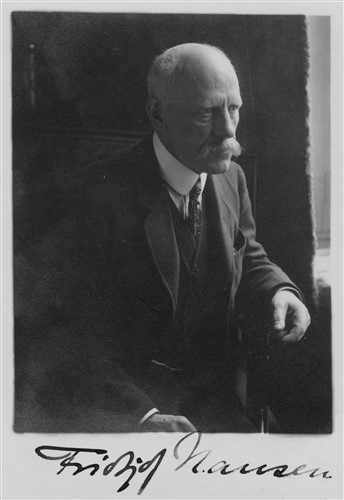

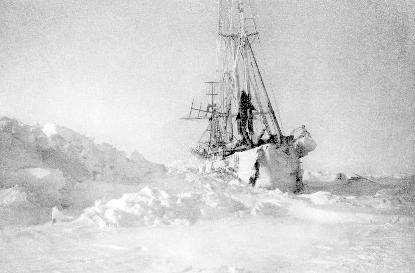




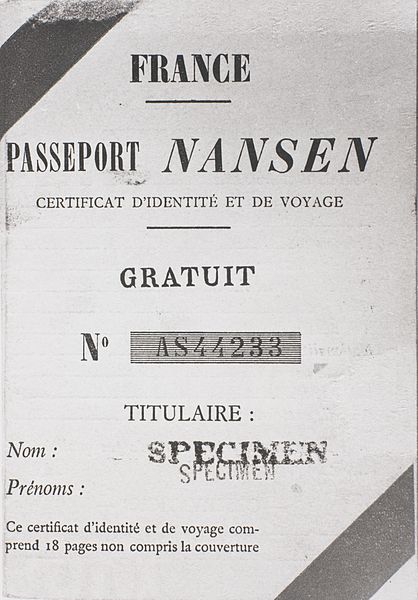

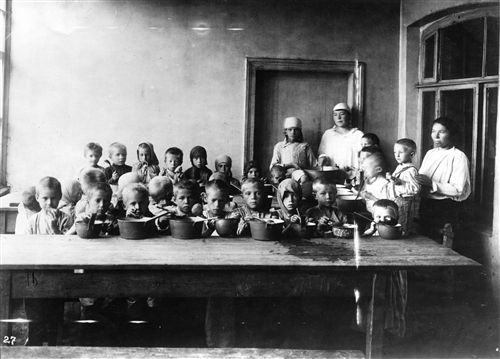
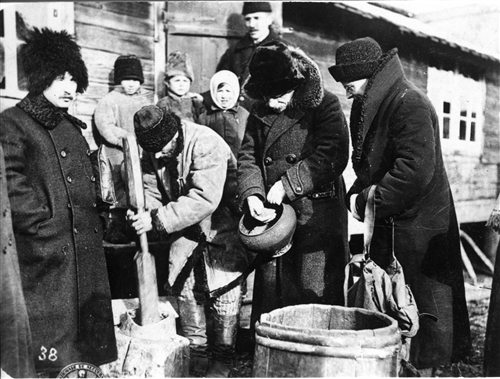
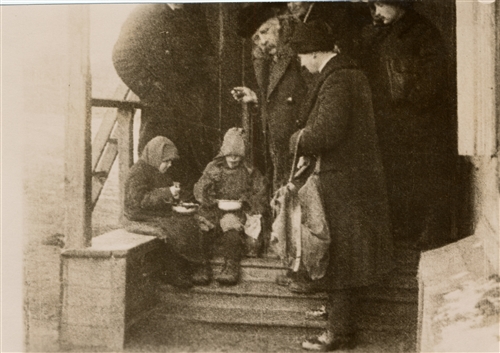
Comments